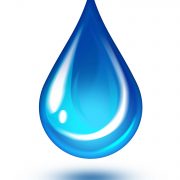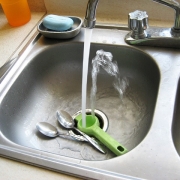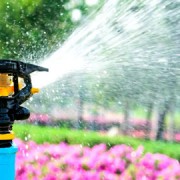Holiday Time Is Water Conservation Time
During the holidays, water plays a role in everything from food preparation to the cleanup process. Here’s how to incorporate water conservation into your holiday preparations:
- Defrost frozen foods in the refrigerator or the microwave instead of running hot water over them.
- Rinse vegetables and fruits in a sink or pan filled with water instead of under running water. This water can then be reused to water houseplants. A running faucet can use up to 4 gallons per minute.
- When washing dishes by hand, fill one sink or basin with soapy water and fill the rinsing sink one-third to one-half full. Avoid letting the water run continuously in the rinsing sink.
- Select the proper size pans for cooking. Large pans require more cooking water than may be necessary.
- Scrape food scraps into the garbage can or a composting bin, rather than rinsing them into the sink’s garbage disposal. A garbage disposal uses up to 4.5 gallons of water per minute.
- Run your dishwasher only when you have a full load. Dishwashers use between 7 and 12 gallons per load.
- Remind overnight house guests to limit their shower time to 5 minutes to conserve water.
- Choose an artificial Christmas tree since they do not require water, are not a fire hazard and preserve our tree canopies.
Don’t let the busy holiday season keep you from practicing good water conservation habits.





